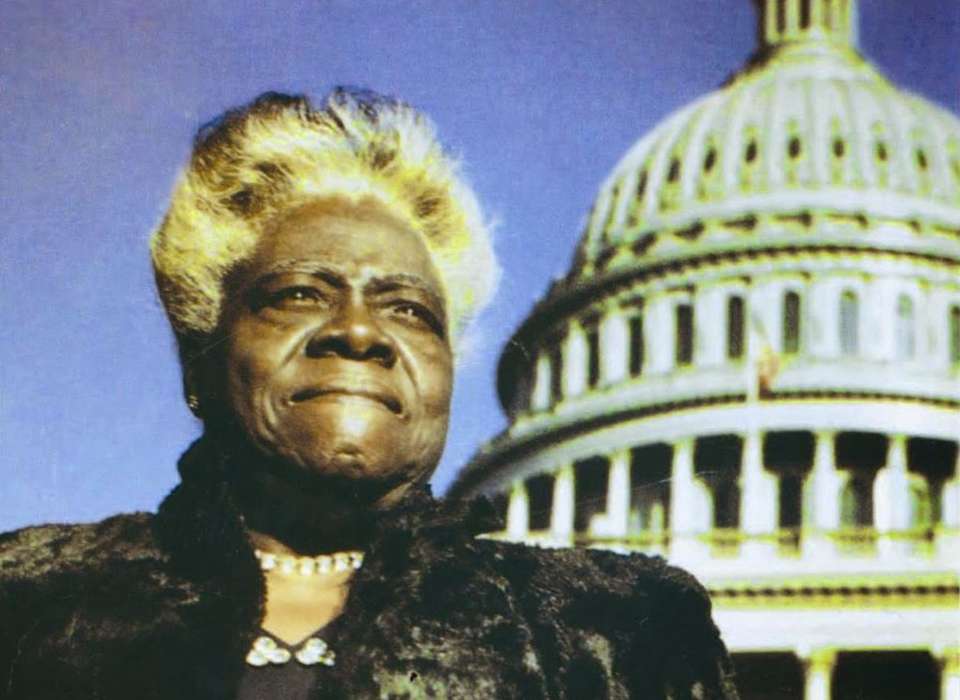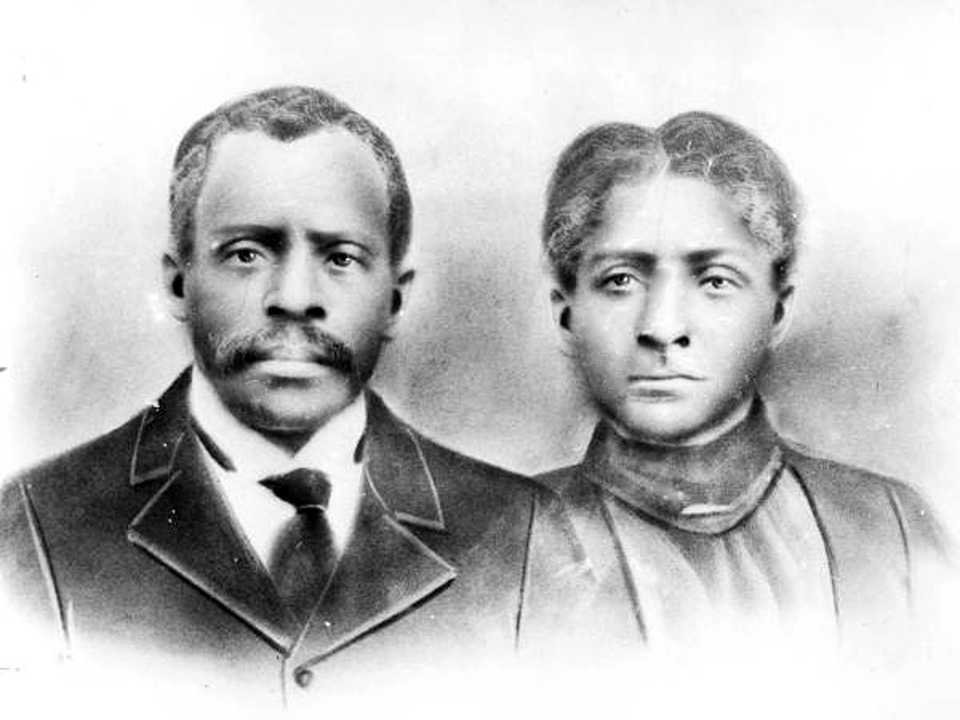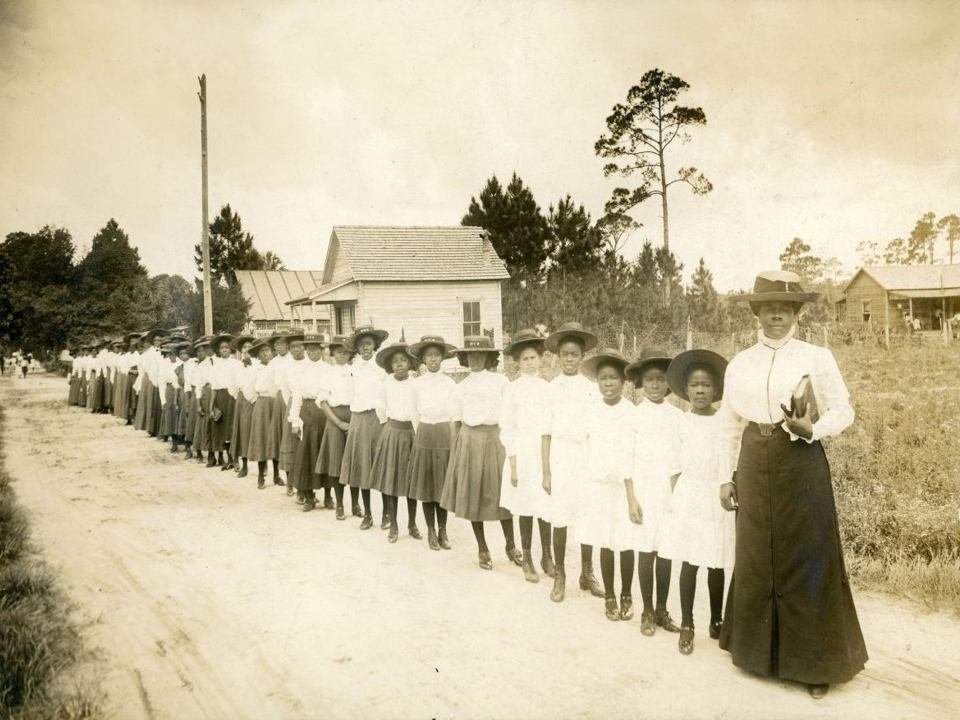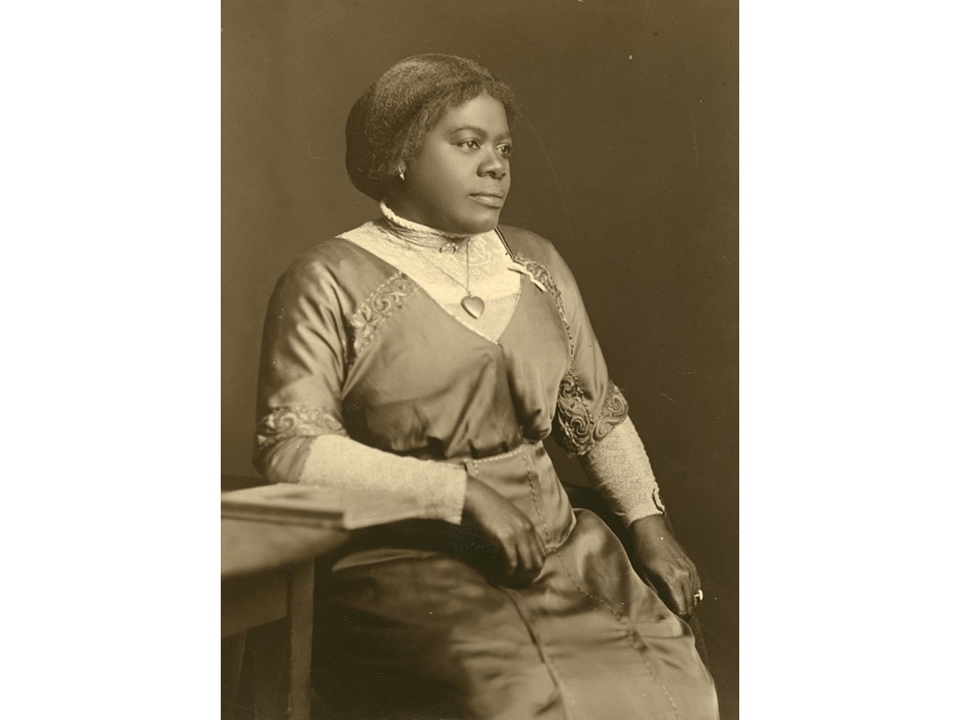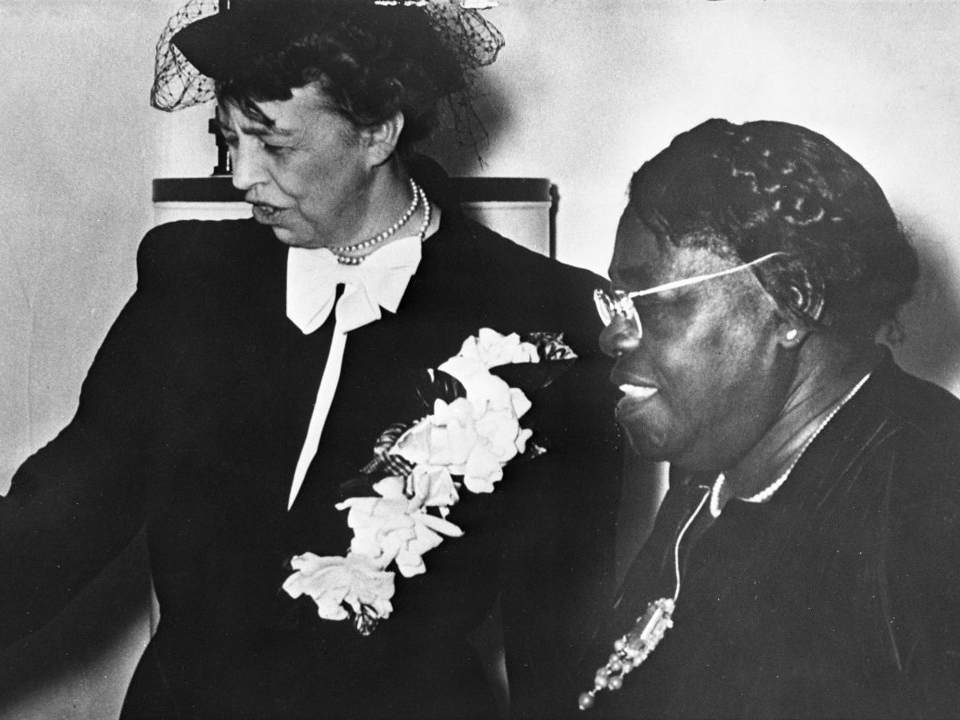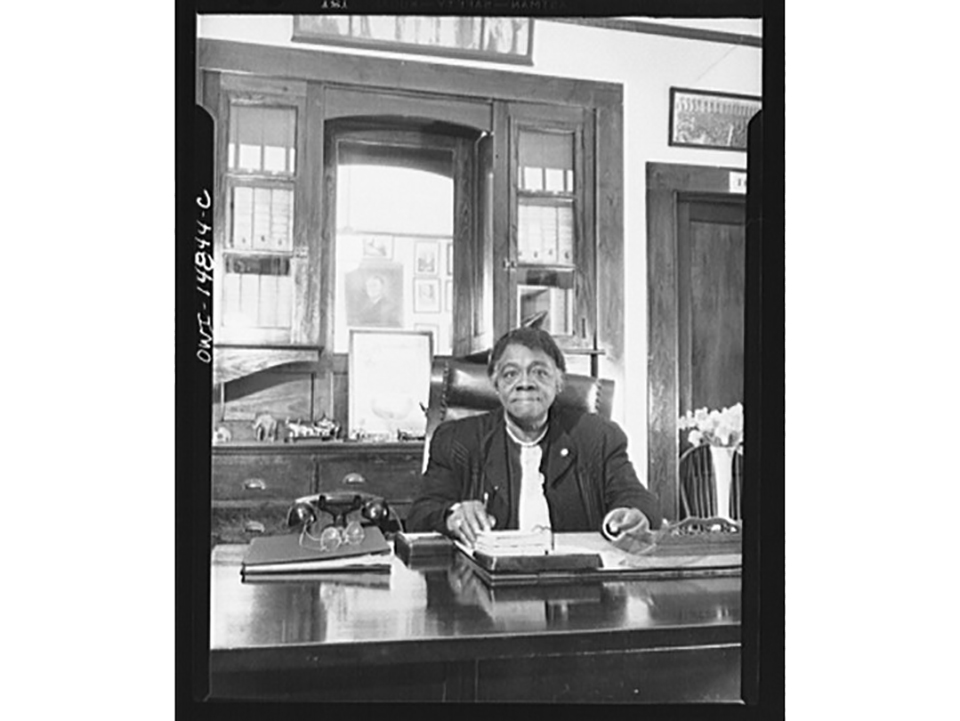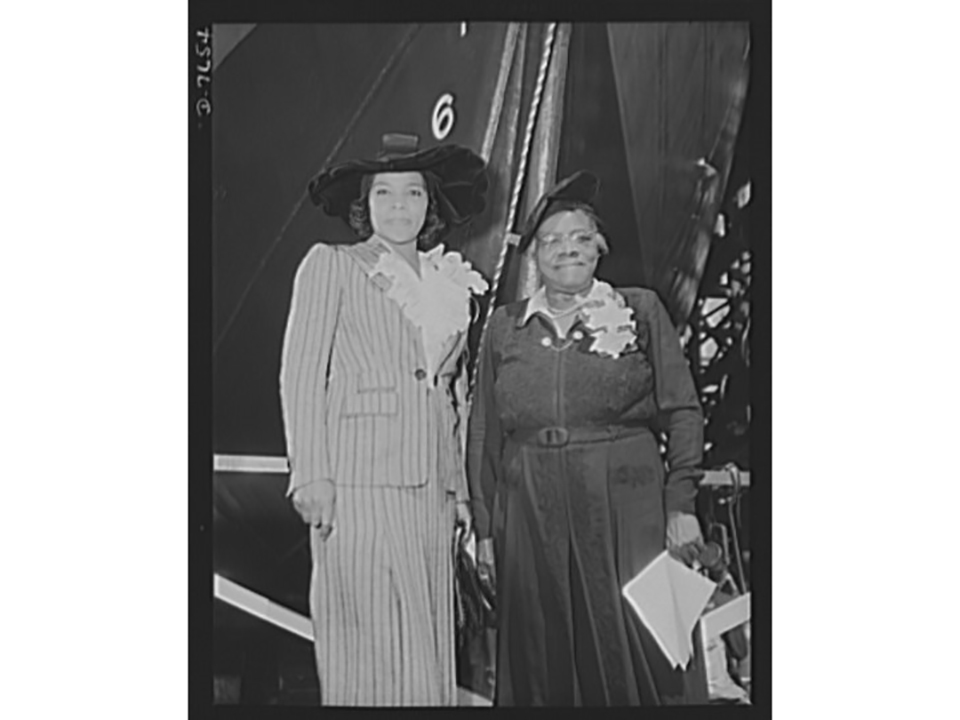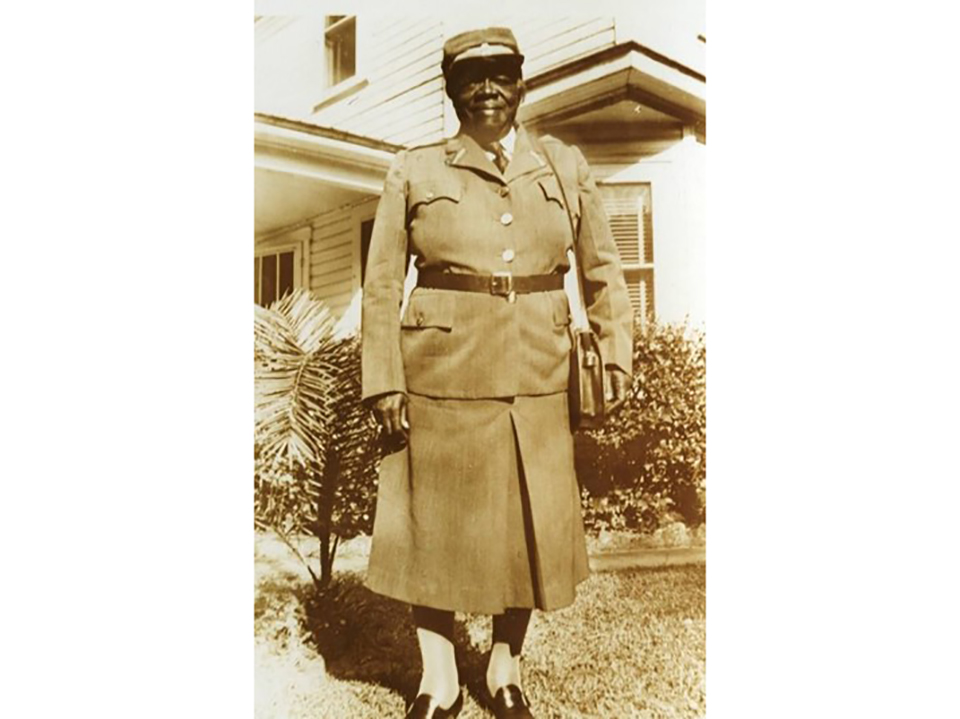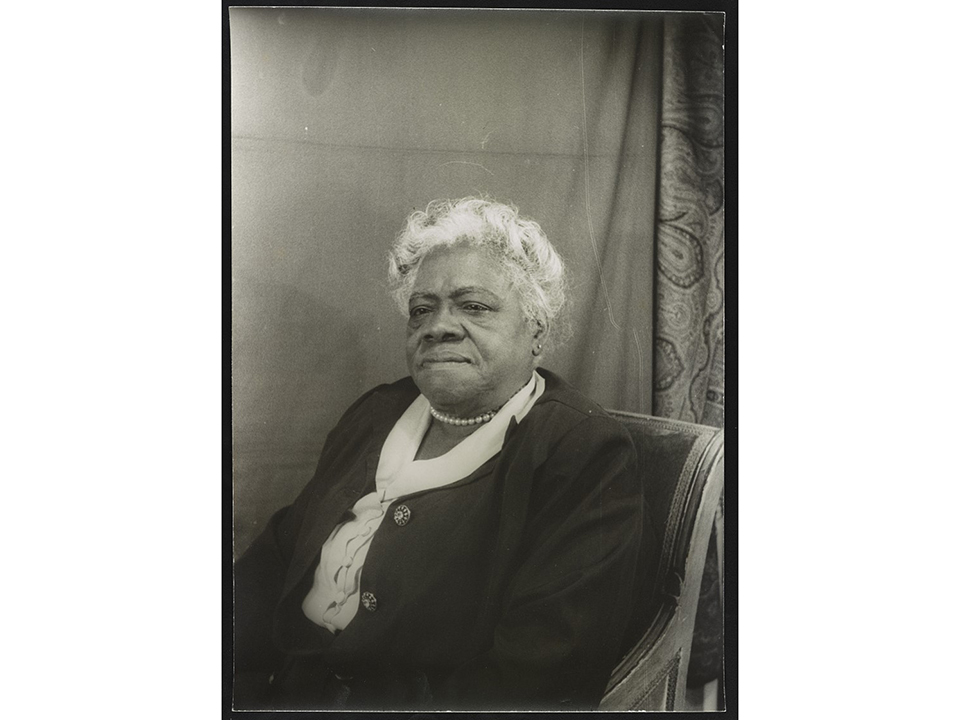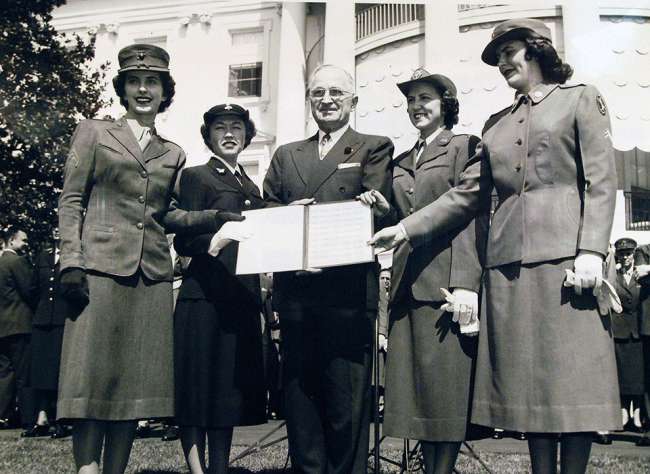Top image: Bethune and the Capital. Photo courtesy of Daytona Times.
In his 1956 autobiography, titled I Wonder as I Wander, Langston Hughes vividly recalled being invited by Mary Bethune to give a reading at Bethune-Cookman College in 1929. After the event, Bethune hitched a ride with the young poet back to New York City. In the time of Jim Crow, where Black travelers were required to carry an Automobile Blue Book that listed the way stops in which African Americans were allowed to stop for meals, restrooms, or for sleeping accommodations, Hughes noted that Bethune avoided much of the indignity of segregated facilities along the long road to New York. He said, “Colored people along the eastern seaboard spread a feast and opened their homes wherever Mrs. Bethune passed their way.” In fact, he continued, “chickens, sensing that she was coming, went flying off frantically seeking a hiding place. They knew a heaping platter of southern fried chicken would be made in her honor.”
Such popularity followed Bethune through much of her 60 years of public service. During that time, she wore many hats including educator, community organizer, public policy advisor, public health advocate, advisor to the President of the United States, patriot, and of course mother, grandmother, and great-grandmother. All in the service of her relentless pursuit of what she called “unalienable rights of the citizenship for Black Americans.”
Drawing of Samuel and Patsy McLeod. Parents of Mary McLeod. Image from State Archives of Florida, Florida Memory.
Mary McLeod Bethune was born in 1875, number 15 of 17 children of former slaves, during the genesis of Jim Crow and the anti-Black violence that would ultimately plague the South for the duration of her life. By the time of her birth, Patsy and Samuel McLeod owned a small farm near Mayesville, South Carolina. Deeply religious, they encouraged their curious daughter to attend a mission school where she thrived. The young Mary McLeod became so enthralled with learning that she won a scholarship to continue her studies at Scotia Seminary for Negro Girls in Concord, North Carolina, and spent one year at the Moody Bible Institute in Chicago, Illinois. It was during her time at Scotia and Moody that she developed her philosophy of “female uplift” and her passion for educating girls for leadership in their communities.
Mary McLeod Bethune with students at the Daytona Educational and Industrial School for Negro Grils. c. 1905. Image from State Archives of Florida, Florida Memory.
In 1898, Mary McLeod married Albertus Bethune and had one son, Albert, in 1899. Her marriage to Albertus was a tumultuous nine years. The family moved from Savannah, Georgia to Palatka, Florida, where she worked in a small mission school. In 1904, the family moved again to Daytona, Florida, where she founded the Daytona Educational and Industrial School for Negro Girls. A few short years later in 1907, her marriage ended when Albertus abandoned the family and returned to South Carolina. Although they never divorced, Bethune listed herself as a widow in the 1910 census. However, her estranged husband did not die until 1918.
Mary McLeod Bethune, Daytona Beach, 1915. Image from State Archives of Florida, Florida Memory.
In 1923, Bethune successfully negotiated the merger of her school in Daytona with the Cookman Institute in Jacksonville, Florida. Together, they created the coeducational four year Bethune-Cookman College. By the time of the merger, she was already a highly respected leader in Black education and among Black women’s clubs. In addition to her school, Bethune worked with the Florida Federation of Colored Women’s clubs to found a home for delinquent Black girls in Ocala, Florida. She served as president of the Southeastern Federation of Colored Women’s Clubs (1920-25), the National Association of Teachers in Colored Schools (1923-24), and she also served as president of the National Association of Colored Women (1924-1928.) Her work on local, regional, and national boards elevated her status as a leader of the Black community. By 1935, she founded the National Council of Negro Women all while continuing to serve as President of Bethune-Cookman College.
Her work with the college, national organizations, and her involvement in political advocacy led to an invitation from President Herbert Hoover to attend a White House conference in 1930. Bethune capitalized on the invitation and left the conference a leading advocate and voice for African Americans in the United States.
Eleanor Roosevelt and Mary McLeod Bethune in 1937. Image from State Archives of Florida, Florida Memory.
During the depths of the Great Depression and the hope of the New Deal, Bethune changed her political party from Republican to Democrat, and whole-heartedly committed herself to the betterment of life for African Americans. In 1931, Bethune was listed tenth on a list of the most outstanding living American women. She used her platform to push an agenda for racial and gender inclusion and championed conventional family life for racial uplift.
Bethune was introduced to the Roosevelts in 1927 and later supported their run for the Presidency. The close friendship with Eleanor Roosevelt was instrumental in gaining regular access to the President. In 1936, President Roosevelt tasked her to join the National Youth Administration and by 1939 she became the Director of Negro Affairs. As Director, Bethune was the highest paid African American in government at the time—with a $5,000 salary. Under her guidance as Director, NYA employed hundreds of thousands of young African American men and women and established a “Negro College and Graduate Fund” that supported over 4,000 students in higher education.
Mary McLeod Bethune, Director of NYA Negro Affairs, 1943. Image from Library of Congress, 2017843211.
Her work with the Roosevelt administration continued when she established and led the informal “Black Cabinet.” The term was coined by Bethune in 1936 and frequently used to describe President Roosevelt’s advisors on issues facing Black communities around the country. The Black Cabinet worked on lynching legislation, attempts to ban poll taxes in the South, welfare, and they worked with New Deal agencies to create jobs for unemployed African Americans. The cabinet also helped draft the presidential executive orders that ended exclusion of African Americans in armed forces and defense industries during World War II. The influence of the Black Cabinet grew from the unprecedented access of Mary McLeod Bethune to the President and the first lady. The work of the cabinet ultimately laid the political foundation of what would become the modern civil rights movement.
Launching the liberty ship: SS Booker T. Washington, 1942. Image from Library of Congress, 2017695234.
During World War II, she was active in mobilizing support for the war effort among African Americans. She publicly argued for equal opportunity in defense-industry manufacturing and in the armed forces. In a 1941 speech, she eloquently embodied the sentiment of equality:
“Despite the attitude of some employers in refusing to hire Negros to perform needed, skilled services, and despite the denial of the same opportunities and courtesies to our youth in the armed forces of our country, we must not fail America and as Americans, we must not let America fail us.”
Mary McLeod Bethune
She led war bond drives, blood donation drives, and encouraged African American women to staff the canteens that dotted the country. Bethune also served as a special assistant to the Secretary of War for the Women’s Army Auxiliary Corps. In the role as Special Assistant, she was responsible for helping establish a training school and recruiting Black women for army officer training.
Mary McLeod Bethune in WAND uniform, 1944. Image from Tuskegee University Archives.
Bethune was named honorary General of the Women’s Army for National Defense. After the Women’s Army Auxiliary Corps was converted to active duty status in July 1943, she also served as an advisor for the new Women’s Army Corps. As an advisor to the WAC and WAND, she successfully lobbied President Roosevelt to end segregation in veteran rehabilitation centers and frequently briefed the President on instances of violence against Black service members in the South.
Bethune remained a close advisor to the President until his death. She attended his second, third, and fourth inaugurations, and was delivering a speech in Dallas, Texas, when the news of Roosevelt’s death was announced on April 12, 1945. She immediately flew back to Washington and participated in a nation-wide radio broadcast celebrating President Roosevelt.
Mary McLeod Bethune in 1949. Image from Library of Congress, 2004662601.
After the war, Bethune served as an associate consultant to the US delegation to help draft the United Nations charter. During the negotiations, she focused her efforts on the rights of people living in colonized countries around the world. She left the conference with a deep sense of disappointment, as she did not get the concessions of freedom, human rights, and self-determination that she so deeply desired.
In 1949, she was invited to Haiti to receive the highest Hattian civilian honor, the “Medal of Honor and Merit.” She also traveled to Liberia, as a representative of President Truman, where she received the “Commander of the Order of the Star of Africa,” Liberia’s highest medal. Over the course of her life, she received 11 honorary degrees from Black and white colleges—including Rollins College, where she was the first African American to receive such an honor in the entire South.
Her legacy continued after her death in May 1955. She was the first Black woman to have a national monument dedicated to her in the nation’s capital. Schools, public parks, and streets have been named in her honor. Her greatest legacy remains Bethune-Cookman University, one of the top 50 historically Black colleges and universities in the country.
Historian Audrey Thomas McCluskey summed it up best when she wrote: “Despite the numerous instances of racism shown toward her, and even unsubstantiated charges that she was a Communist sympathizer, Bethune maintained her belief in America.” She possessed unwavering patriotism, a strong sense of racial pride, and even walked with a cane that had once belonged to her friend, President Franklin Roosevelt. McCluskey continued, “She lived almost 80 years, a lifetime that reached from the post-Reconstruction era to the dawn of the modern civil rights movement.”
In her last will and testament from 1955, Dr. Bethune wrote:
“I leave you hope. The Negro’s growth will be great in the years to come. Yesterday our ancestors endured the degradation of slavery, yet they retained their dignity. Today, we direct our strength toward winning a more abundant and secure life. Tomorrow, a new Negro, unhindered by race taboos and shackles, will benefit from more than 330 years of ceaseless struggle. Theirs will be a better world. This I believe with all my heart.”
Mary McLeod Bethune
Sources and Recommended Reading:
McCluskey, Audrey Thomas and Elaine M. Smith. Mary McLeod Bethune: Building a Better World. Indiana University Press, 1999.
Long, Nancy Ann Zrinyi. Mary McLeod Bethune: Her Life and Legacy. Florida Historical Society Press, 2019.
Robertson, Dr. Ashley N. Mary McLeod Bethune in Florida: Bringing Social Justice to the Sunshine State. The History Press, 2015.
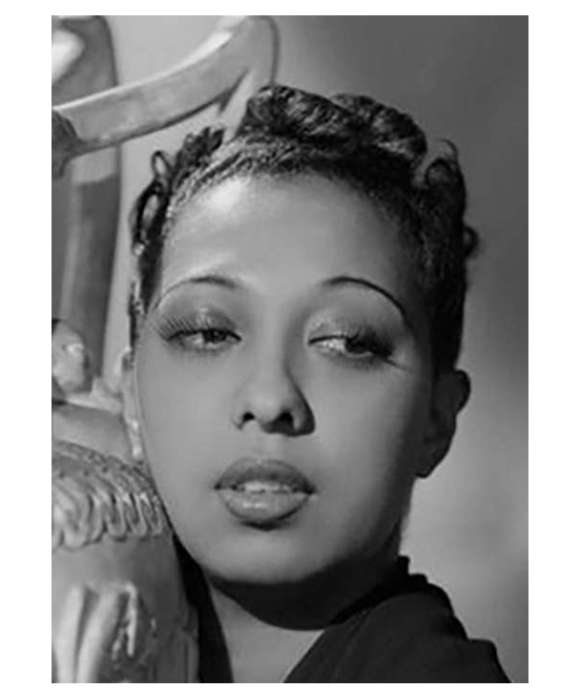
Siren of the Resistance: The Artistry and Espionage of Josephine Baker
Iconic entertainer of the Jazz Age, famous for her risqué performances, Josephine Baker responded to the start of World War II by becoming a spy for the French Resistance. Known as the “Creole Goddess” of France, Baker used her celebrity to gain access to high-ranking Axis officials.
Adam Foreman
Adam Foreman is the former Student Programs Specialist at The National WWII Museum.
Cite this article:
MLA Citation:
APA Citation:
Chicago Style Citation:
